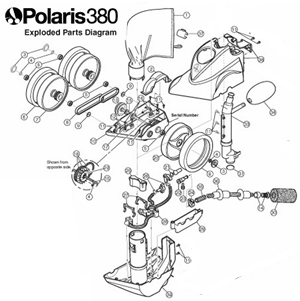
One of the best videos of the day, was to be a simple Polaris 380 tune-up video, when we discovered some unexpected internal problems…
The symptoms that led up to the exploratory surgery of the Polaris 380 was sluggish and slow performance. “It just doesn’t seem to have the power that it used to” Joe said, “Hardly climbs the deep end wall, and just seems a little tired…” As usual, Joe was ready to buy a new Polaris cleaner, and started asking about the Polaris 3900 Sport cleaner.
Let’s look at some of the symptoms and solutions of a slow and sluggish Polaris 380 pool cleaner.
LOW PUMP PRESSURE
Polaris pool cleaners, like the 180, 280, 380 and 3900 Sport use a booster pump to provide 28-32 psi of water pressure – which powers the cleaner’s movement and cleaning actions.
The pump can be pressure tested by using a Polaris cleaner pressure testing stick and a pressure gauge, placed on the end of the feed hose, to make sure that a problem of sluggish performance is not caused by the booster pump, or a leak or clog along the feed hose.
Another way to check pressure is to count the wheel revolutions. By marking the wheel with an ink pen, and holding the cleaner under water, count the wheel revolutions for 30 seconds and then multiply by two. You should have 28-32 revolutions per minute of the wheel. If so, you can be certain that the water flow is making it all the way through the cleaner, and is powering the drive turbine at the correct rate.
FEED HOSE LEAKS
If you don’t pressure test the floating feed hose, the first thing to check is for leakage along the hose, at the back-up valve, and around the swivels. A small amount of leakage around the swivels is normal, but you shouldn’t see any cracks or splits. Back-up valves can leak constantly if they get sand or grit stuck in the gears of the hydrotimer, or if they have been dragging along the floor of the pool.
I should’ve mentioned this earlier, but have you checked the debris strainer located in the wall fitting? By the way, if your strainer gets clogged often, you may think it better to operate the cleaner without the strainer (Hi, Joe!) – don’t do it! You will have a difficult repair on your hands, as you unclog the tiny orifices located deep within a Polaris cleaner.
TAIL SWEEP LEAKS
The tail sweep has wear rings to protect the tail, and a heavy duty tip, wrapped in the foam tail sponge. If the end of the tail wears off, or if the wear rings wear down and a hole develops in the tail sweep, this can release enough water to slow down the cleaner.
BROKEN BELTS – CRACKED AXLES
This is easy to test, just spin one of the 3 wheels on your Polaris cleaner, and they should all spin, smoothly and at the same speed. If they don’t all spin at the same time when you spin just one wheel, you will have broken drive belts, broken wheel or broken axles, where the wheel connects to the cleaner body.
INTERNAL LEAKS
If you haven’t found the leak by now, you may want to watch the video below, as we go inside the cleaner to look for internal leaks on the WMS or water management system. In the video below, we discovered that the hoses that lead to the thrust jet and the tail sweep were both partially disconnected. The zip ties that hold them in place were broken, and the pressure reduction on the thrust jet, and internal leakage, was enough to slow down the Polaris 380 to a crawl. The o-ring on the feed pipe could also cause internal leakage, if it becomes mispositioned or misplaced, or pinched, like ours was found to be.
INTERNAL CLOGS
As mentioned earlier, if you decide not to use your debris strainer – at the wall fitting, or in-line, you risk clogging up the internal works of the cleaner. The tail sweep or thrust jet can become clogged, the venturi jets located in the jets can become clogged, or the turbine jet (which powers the wheels) can easily clog up with something as small as a grain of sand.
If you remove the debris bag on top, place the cleaner on the deck and turn on the booster pump momentarily, the venturi jets should shoot about 20 feet into the air (if not clogged). Likewise, the tail sweep should spray about 15 feet, and the thrust jet on the back should shoot about 10 feet – again, if not clogged. If one of these doesn’t spray far enough, you may have found your pressure leakage, or blockage.
If you do find that one of these is clogged, hold the disconnected feed hose over the clogged orifice, and the water pressure will usually flush out the debris, backwards. In some cases you may need to ream out the orifice slightly, with a small wire.
Check out the video below! As usual, not the best production value, but lots of tips on Polaris 380 repair and tune-up to improve speed packed into 5:52 mins.


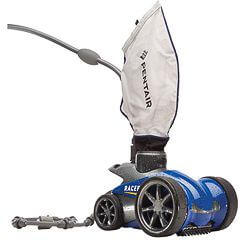
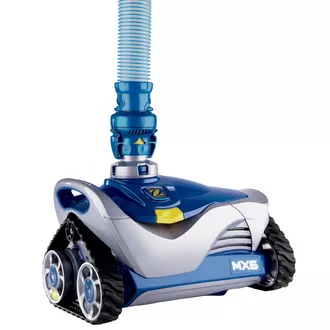
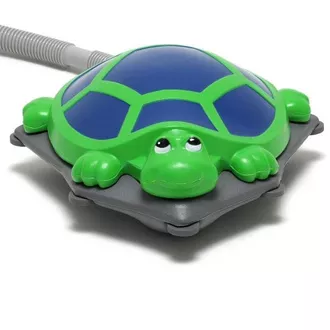

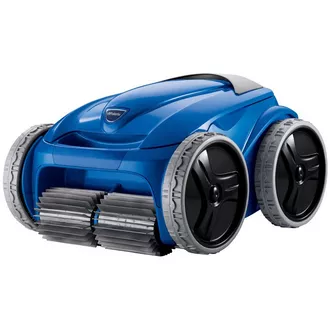

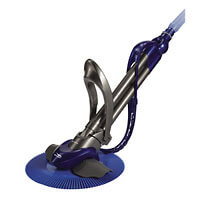
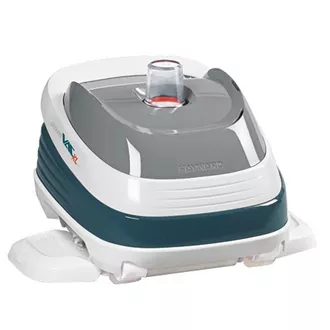
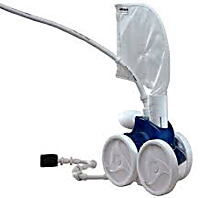

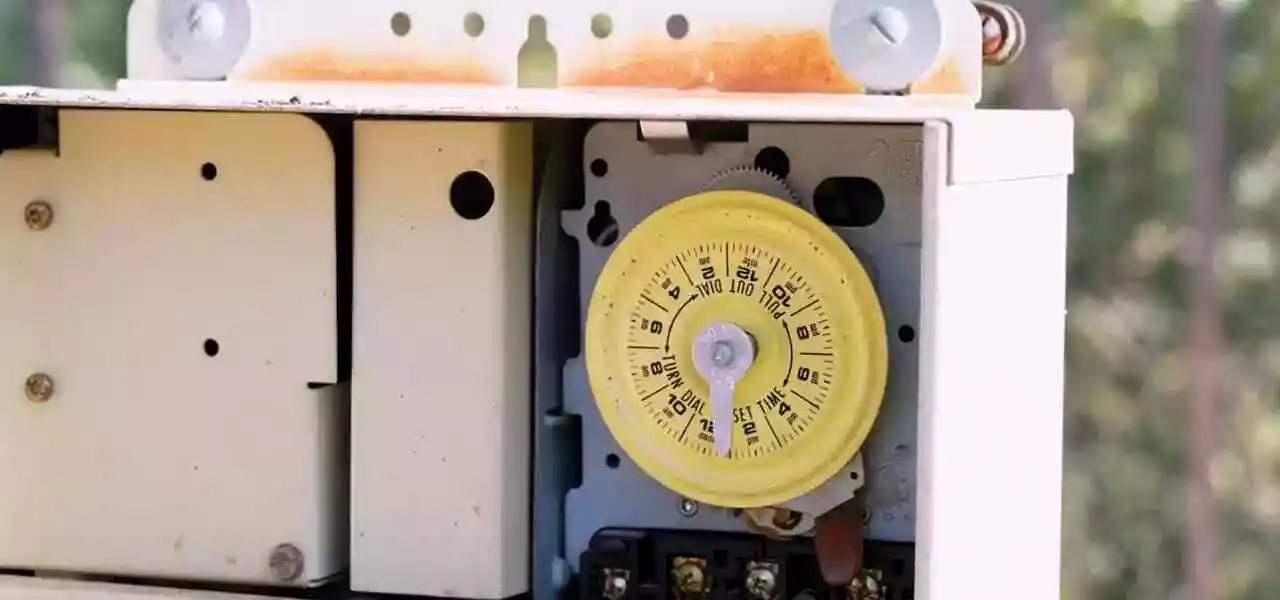
I have a strange problem with my Polaris 380. Has worked fine, and have replaced many parts: belts, zip ties, all internal o rings, drive train, back up valve, pressure relief valve, hose, and booster pump. Venturini jets powerful and shoot 15-20 feet and have clean them them with a paper clip. Filter in wall is clean and the blue washer is in place. Wheels spin great above water and is robust and strong, however as soon as the Polaris is underwater, wheels come almost to a stop. Wheels turn very slowly and gets stuck in corners and sometimes looks as it is glued to the side of the wall, with the tail slowly sweeping back and forth. No issues or leaks with adjusting the tail. Nothing binding the wheels, and the cover for the drive train is on and not rubbing the gears. Any idea what it could be? I’m puzzled
Hi George, have you checked for loose belts/tight belts? The axles are adjustable, as you likely know. Generally the belt should deflect (push-down), about 1/2″ when pressed with your fingertip. Or how about bearings? the wheel bearings or the turbine bearing – I think you said that may be new. How about the Transfer Pully Belt Divider? To separate the belts on the center pully, So they don’t hit each other? Also there is a plastic spacer on the shaft, between the pully and the sidewall, check that not missing. Not quite sure what it may be, but keep fiddling, you’ll figure it out!
Hi Davy, thank you for your reply and suggestions. I looked at everything you suggested, and all was good. Put it back together yet barely moving still, and thought it’s time for a new one. As it was on, I took the cover off and had a final visual inspection. The paper clip was near and thought why not. I inserted it into the jet that propels the drive train (as I had done a few times before) and vigorously moved it around, and thereafter pressure increased from that jet and the wheels were spinning fast and powerful! Put the cover back on, and working like a champ again! Thank you again. Your suggestions prompted me to give things another inspection. Often times, it’s the smallest of details that get things done…
Yes, the jet that sprays onto the ‘paddle wheel’ has a very small orifice, and can become clogged with small grit or fibers that make their way past the strainer at the wall fitting. Good Job!
Hi Both! Where is the jet that propels the drive train to insert the paperclip? I have a very similar problem with my Polaris 380.
Hi Greg, it’s a jet that is part of the WMS (Water Management System), that is located beneath the Turbine Upper Housing, a removable white plastic cover that is over the main turbine. Remove the lid and then remove the rounded white, Turbine Upper Housing, then look for the small jet that sprays water onto the turbine, that’s what we are talking about…
Which video you are talking about in this blog? I don’t see any video link.
==========
If you haven’t found the leak by now, you may want to watch the video below, as we go inside the cleaner to look for internal leaks on the WMS or water management system.
=================
Sunny, thanks, appreciate the help. Here is the video link: https://youtu.be/D86uTwqC_EY – I have added the video to the blog post.
Nice feed.
Quick Question: what would cause the sweep tail to not move side to side?
Hi Greg, there is an adjustment knob that screws in right where the tail attaches. If the screw is screwed all the way in, or has fallen out completely, that would cause the tail to not sweep from side to side (lazily is best). If you open the knob up all still no flow, there may be a hole in the tail, worn thru because of the wear rings having worn down. If that’s not the problem, then the hose inside the cleaner could have become disconnected from the tail assembly, open her up and take a look, doctor!
I found this article trying trouble shoot leaking at base of tail nipple. I’m prepared to disassemble but wondering if you may know the issue.
Hi Bill, there is a small o-ring on the tail nipple that may be missing, or the screws that hold the tail nipple into the port for the WMS may be loose or missing